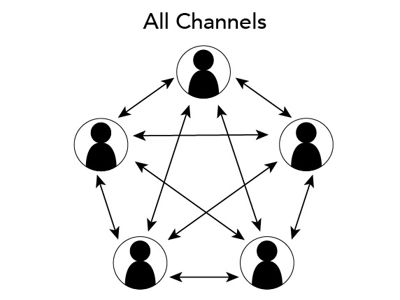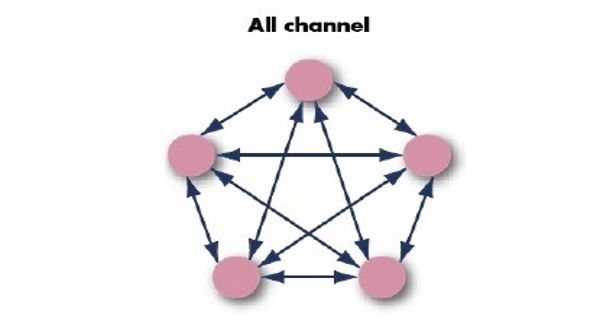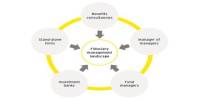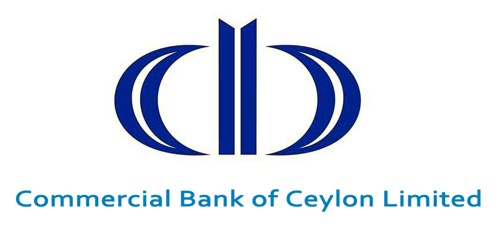In an all-channel network, communications flow upward, downward, and laterally among all members of the group. Here all members of the group communicate with all other members. This pattern of communication supports an egalitarian, (equal, unrestricted) participative culture and fosters (promote, cultivate) cross-functional efforts. Such a network is available in the case of informal groups I Group members that have no formal structure, leader, or task to perform.
All Channel Network enables people to communicate with each other or with people who are involved in the same process. This network can be considered as a development of a wheel network with no central person to control the way of communication.
The all-channel network is best if you are concerned with having high member satisfaction. Information flows fast, though there may be problems with coordination. All the individuals in this network communicate with each other freely, permanently, and regularly. There is one path of communication in a single-channel network for a specific position and information flows through that path only to various persons. It follows the informal channel of command or communication and provides optimum satisfaction to our individuals. This is usually the official path of communication where information flows ‘through proper channel’ between the superior and subordinates. Information flows very fast, though there may be a problem of coordination. All information flows through the concerned superior or subordinates only.

It has many positive attributes like:
- Only essential information flows through this path,
- Information is authentic and chances of miscommunication are reduced, and
- Superiors exercise control over subordinates and hold them accountable for the information transmitted to them.
In large organizations, with too many levels, a single-channel network may not be feasible as geographical distances and gaps in levels can result in information distortion. There is a single path of communication in a single-channel network for a particular position and information flows through that path only to various persons. Multiple channel networks are more suitable in such situations as one position can be linked to various positions.
Information Source:
















